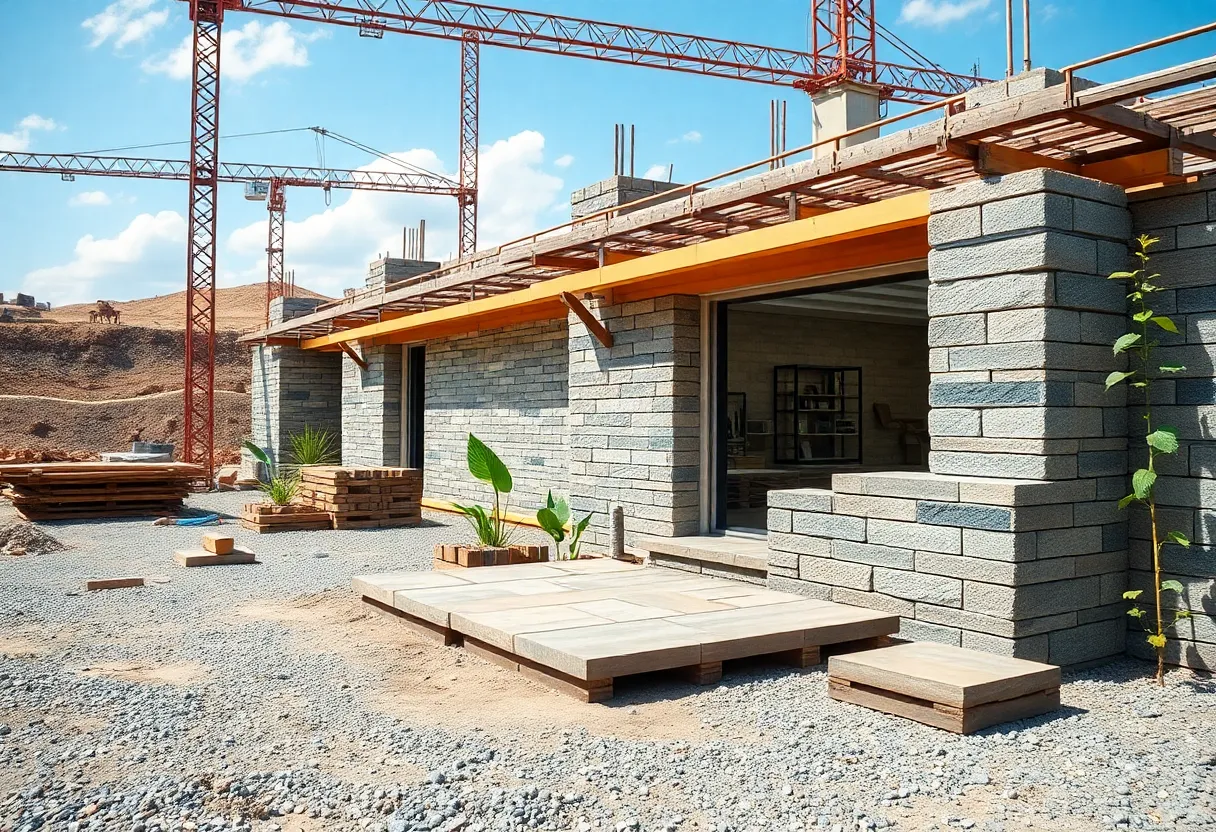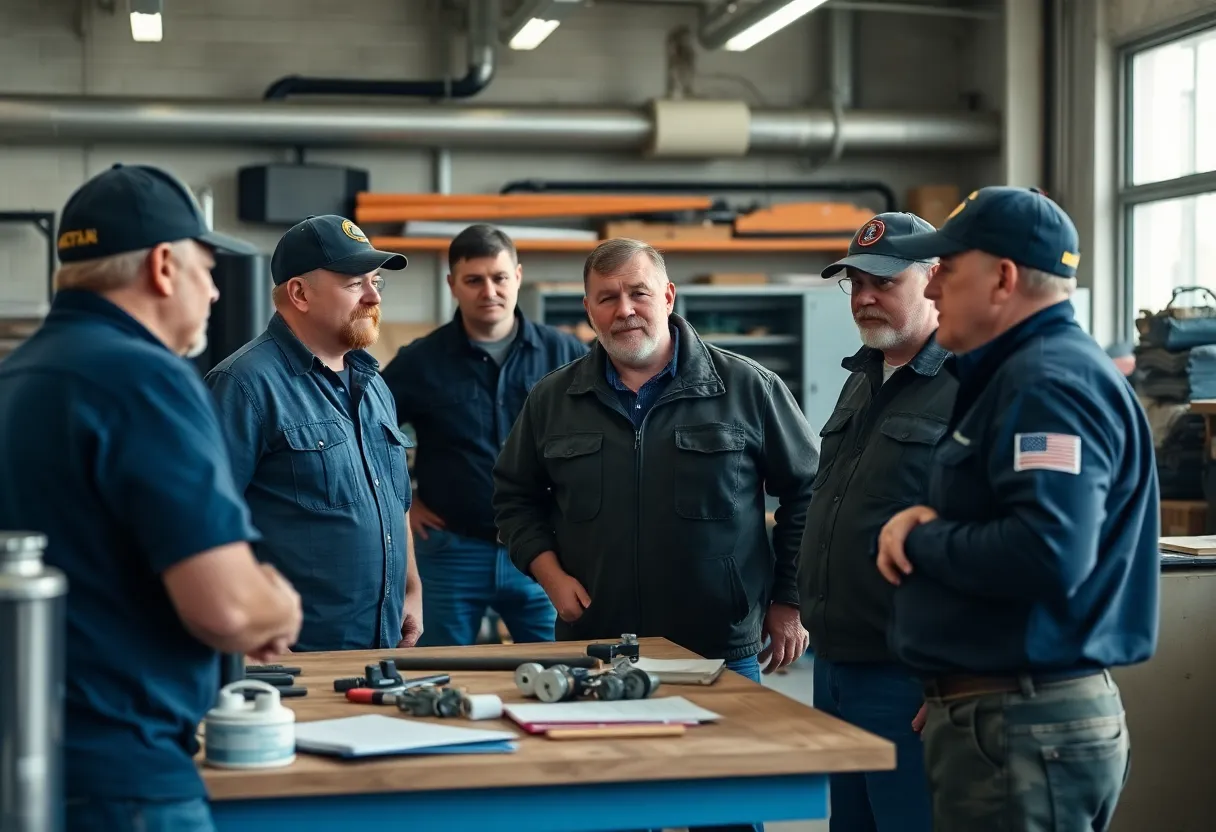Golden, Colorado, September 5, 2025
News Summary
Innovative research at the Colorado School of Mines is leading efforts to convert mine tailings into high-value construction materials. Led by associate professor Reza Hedayat, the initiative aims to enhance the supply of critical minerals while addressing environmental challenges associated with mining waste. By repurposing mine tailings into products like geopolymer bricks and ceramic tiles, the research promotes a circular economy and aims to improve mineral recovery rates, ultimately benefiting both the mining industry and sustainability efforts.
Golden, Colorado – Innovative research at the Colorado School of Mines is paving the way for a transformative approach in the mining industry. An associate professor, Reza Hedayat, is spearheading efforts to convert mine tailings, the waste material generated during mining operations, into high-value construction materials. This initiative aims to enhance the supply of critical minerals—such as lithium, cobalt, and rare earth elements—which are vital for various technologies used in energy, communication, defense, and medical sectors.
Mine tailings present significant environmental challenges as they often end up as waste rather than being repurposed. Hedayat’s perspective redefines these materials as opportunities instead of problems, focusing on methods that not only improve mineral recovery but also produce sustainable construction materials. Hedayat’s research involves creating new products such as geopolymer bricks, lightweight aggregates, and ceramic tiles derived from tailings, which meet high performance standards while minimizing the environmental impact of mining activities.
This research’s primary focus is on linking the extraction of critical minerals to the processing of tailings for construction purposes. Hedayat advocates a dual-use approach in the mining sector, emphasizing the recovery of economically viable minerals along with the reuse of materials that cannot be extracted. This approach not only aims to bolster the critical mineral supply chain but also to foster a circular economy—a model that encourages recycling and efficient resource management.
Data indicates that over 90% of mined ore typically remains in the form of tailings, which are generally disposed of without any further processing. However, these tailings often contain valuable components that can be processed and transformed into durable construction materials at a low cost. The strategy is to create a sustainable and scalable system for repurposing mine waste to bolster mineral supply chains. By converting tailings into raw materials for construction, the mining sector could significantly lessen the demand for new raw resources, diminish carbon emissions, and prolong the lifecycle of existing materials.
Hedayat envisions establishing local facilities near mining sites to facilitate the reuse of waste. This approach not only aims to minimize transportation impacts but also seeks to invigorate regional economies. His research aligns with the U.S. Department of Energy’s initiative that emphasizes enhancing domestic critical mineral production through value-added products.
Collaboration across various sectors, including mining companies, educational institutions, and government agencies, will be crucial for the successful implementation of Hedayat’s research. Furthermore, policy support is needed to fund pilot programs and to ease the process for integrated recovery and reuse operations within the industry.
The findings of a related study conducted by the Colorado School of Mines reveal that the United States may be able to meet a substantial portion of its critical mineral demands by recovering materials from mining waste. This study highlights that nearly all critical minerals incorporated into modern technologies are present in processed ore, yet a large majority of these valuable materials wind up in tailings. Currently, the recovery rates for certain critical minerals remain alarmingly low, with around 10% for cobalt and less than 1% for germanium. Enhancing recovery methods could provide a significant boost to various U.S. markets and reduce dependency on imported materials.
Moreover, current market dynamics present economic challenges for recovering these valuable byproducts, necessitating additional research and supportive policies to make such recovery feasible. As shifts towards renewable energy technologies become more pronounced, reclaiming metals from mine tailings is consistent with both national strategic interests and sustainability objectives.
FAQ
What are mine tailings?
Mine tailings are the waste materials left behind after the extraction of minerals from ore. They often consist of crushed rock and other materials that hold little economic value and pose environmental challenges.
What critical minerals are being targeted in this research?
The research focuses on critical minerals such as lithium, cobalt, and rare earth elements, which are essential for various high-tech applications including energy storage, communication devices, and defense technologies.
How does repurposing tailings benefit the environment?
By converting mine tailings into construction materials, the mining industry can reduce waste, minimize the demand for new raw materials, and lower carbon emissions linked to traditional mining practices.
What type of construction materials are being developed from tailings?
The materials under development include geopolymer bricks, lightweight aggregates, and ceramic tiles, all made from processed mine tailings, designed to meet stringent quality and performance standards.
What is a circular economy?
A circular economy is an economic system aimed at minimizing waste and making the most of resources. It promotes recycling, reuse, and the regeneration of materials to create sustainable practices in various industries.
Deeper Dive: News & Info About This Topic
HERE Resources
Additional Resources
- Mines Newsroom: Reimagining Mine Waste
- Wikipedia: Mine Tailings
- Mining.com: America’s Critical Minerals in Mining Waste
- Google Search: Critical Minerals
- Earth.com: Buried Treasure in Critical Minerals
- Encyclopedia Britannica: Mining
- Chemistry World: Unrecovered Byproducts from US Mines
- Google Scholar: Mine Waste Critical Minerals
- Mining Technology: The Hidden Value of Mine Waste
- Google News: Mine Waste Recycling
Author: STAFF HERE PHILADELPHIA WRITER
The PHILADELPHIA STAFF WRITER represents the experienced team at HEREPhiladelphia.com, your go-to source for actionable local news and information in Philadelphia, Philadelphia County, and beyond. Specializing in "news you can use," we cover essential topics like product reviews for personal and business needs, local business directories, politics, real estate trends, neighborhood insights, and state news affecting the area—with deep expertise drawn from years of dedicated reporting and strong community input, including local press releases and business updates. We deliver top reporting on high-value events such as Mummers Parade, Philadelphia Flower Show, and Thanksgiving Day Parade. Our coverage extends to key organizations like the Greater Philadelphia Chamber of Commerce and United Way of Greater Philadelphia, plus leading businesses in telecommunications, food services, and healthcare that power the local economy such as Comcast, Aramark, and Children's Hospital of Philadelphia. As part of the broader HERE network, we provide comprehensive, credible insights into Pennsylvania's dynamic landscape.





